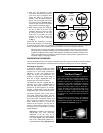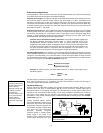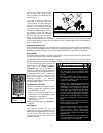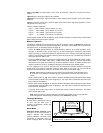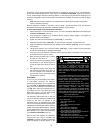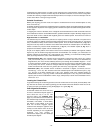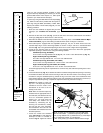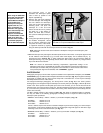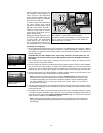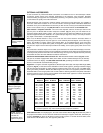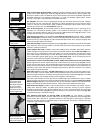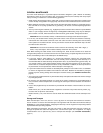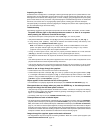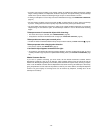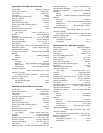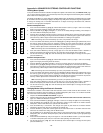
- 19 -
Format 2 utilizes both sections of the
#64 T-Adapter threaded together to
form a rigid unit. In this configuration
there is no field vignetting: images are
illuminated to the edges of a standard
35mm frame (see Fig. 20).
To frame an object in the viewfinder of
the 35mm camera body, slightly
loosen the knurled attachment ring (3,
Fig. 18), which threads the #64 T-
Adapter to the telescope’s photo port;
rotate the camera body to achieve
proper framing of the object; then re-
tighten the knurled ring.
Photography through a long lens, such
as the ETX, requires special technique
for good results. The photographer
should expect to use a roll or two of
film in acquiring this technique. Long-
lens photography has its own rewards, however, which short-focus lenses cannot duplicate.
A Few Tips on Photography
1. Use the optional table tripod specific to your model of ETX, or the #883 Deluxe Field Tripod as a platform
for the telescope. At effective focal lengths of 1250mm to 1450mm (ETX-90EC), 1640mm to 1830mm
(ETX-105EC), or 1900mm to 2310mm (ETX–125EC), even small external vibrations can easily ruin an
otherwise good photo.
CAUTION: With the #64 T-Adapter and a camera body mounted to the ETX photo port, the
telescope can be rotated vertically only 45°. Moving past this point may damage the telescope
and camera.
2. Use a cable-operated shutter release. Touching the camera body to operate the shutter will almost
certainly introduce undesirable vibrations.
3. Focus the image with extreme care. While observing the subject through the camera’s reflex viewfinder,
turn the ETX's focus knob (8, Fig. 1) to achieve the sharpest possible focus. Note that some 35mm
cameras may have an optional focusing screen (available from the manufacturer) for use with a long
telephoto lens. This screen provides a brighter and clearer image to focus and is highly recommended.
4. Correct shutter speeds vary widely, depending on lighting conditions and film used. Trial-and-error is the
best way to determine proper shutter speed in any given application.
Note: The camera used with an ETX model may have an exposure meter that is still active when
the standard lens is removed and the body is connected to the telescope with the T-mount. If used
for terrestrial photography, the camera meter should be acceptable. If used for astrophotography,
the meter probably will not provide good results since camera meters are not made to
compensate for a dark sky.
5. Terrestrial photography through an ETX model is sensitive to heat waves rising from the Earth’s surface.
Long distance photography is best accomplished in the early morning hours before the earth has had
time to build up heat.
6. Photography of the Moon and planets through an ETX model can be especially gratifying, but points
1 through 4 should be particularly noted in this case. Lunar or planetary photography requires that the
telescope be polar aligned (see
POLAR ALIGNMENT PROCEDURE, page 16), and that the telescope’s
motor drive be in operation (see APPENDIX A, page 26).
Note: Long-exposure photography of deep-sky objects is not practical with an ETX model, since
this type of photography requires special electronic and optical guiding devices not available for
this telescope.
Fig. 18: Example of photography through the ETX using the
#64 T-Adapter: (1) Short section of #64 T-Adapter;
(2) Extension section of #64 T-Adapter; (3) Knurled attachment
ring; (4) T-mount; (5) Flip-
mirror control in “down” position; (6)
35mm camera body; (7) Format 1.
12
6
4 5
7
Fig. 19: Example of a
format 1 photo.
Fig. 20: Example of a
format 2 photo.
3



